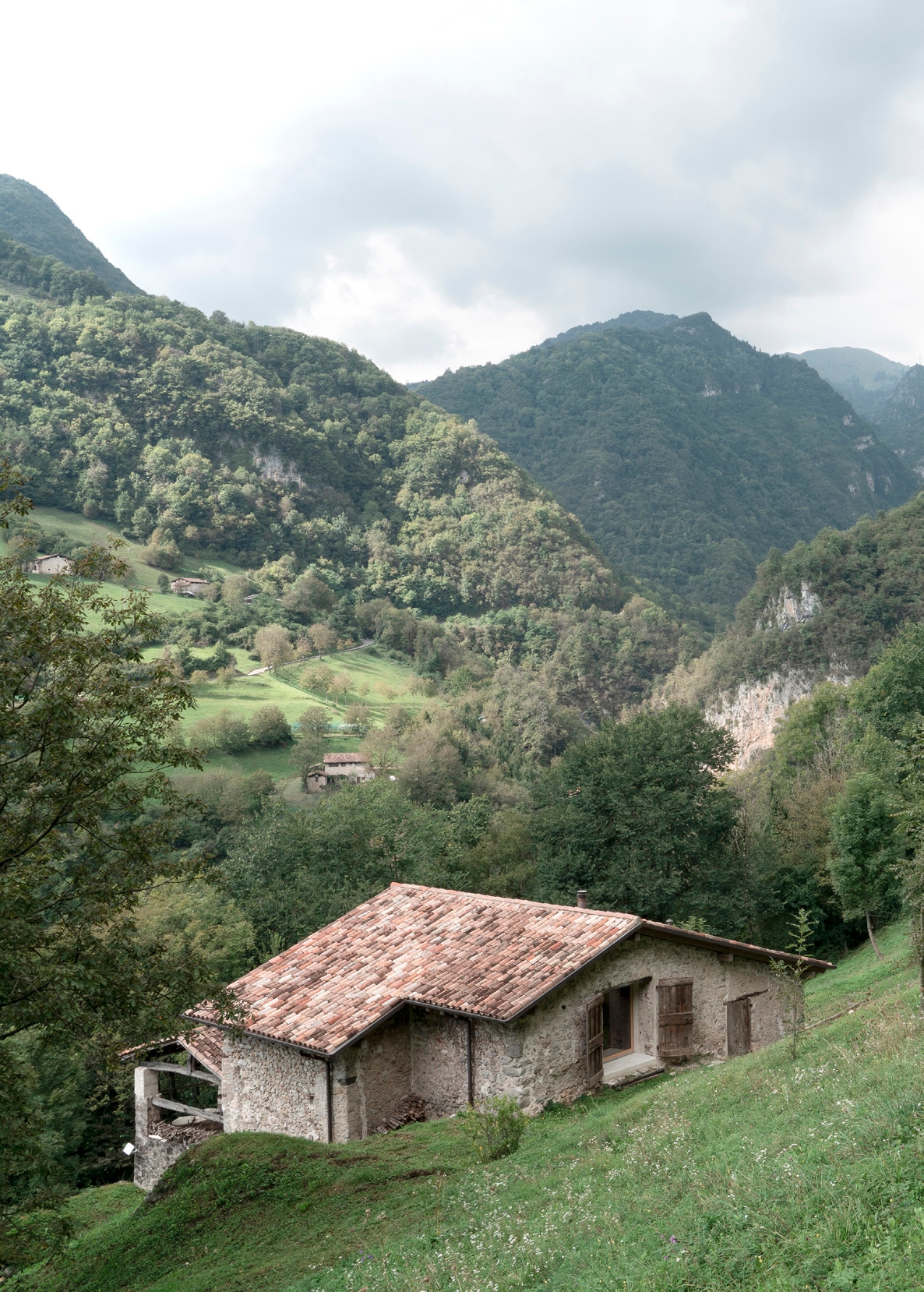
In the 1980s, a series of publications revived interest in rural and mountain constructions, emphasising their deep connection with historical and material contexts. Inspired by this renewed perspective, the author began studying Alpine architecture, initially in Valsassina and later in Val Sabbia, focusing on mid-mountain barns. These structures, once essential to the local agro-pastoral economy, have gradually fallen into disuse due to economic decline and emigration. Through detailed surveys and typological analysis, the author documented their architectural evolution and sought ways to counter their progressive disappearance.
This effort culminated in the restoration of an abandoned barn, carefully transformed into a temporary residence while preserving its original character. The project prioritised maintaining the building’s relationship with the surrounding landscape, restoring lost connections such as pathways, pastures, and wooded areas. By integrating subtle structural reinforcements and minimal design interventions, the restoration respected the barn’s essential form while adapting it to new uses.
This work highlights the importance of vernacular architecture, not only as a testimony to historical rural life but also as a model for sustainable design, where construction and nature exist in a delicate and meaningful balance.







